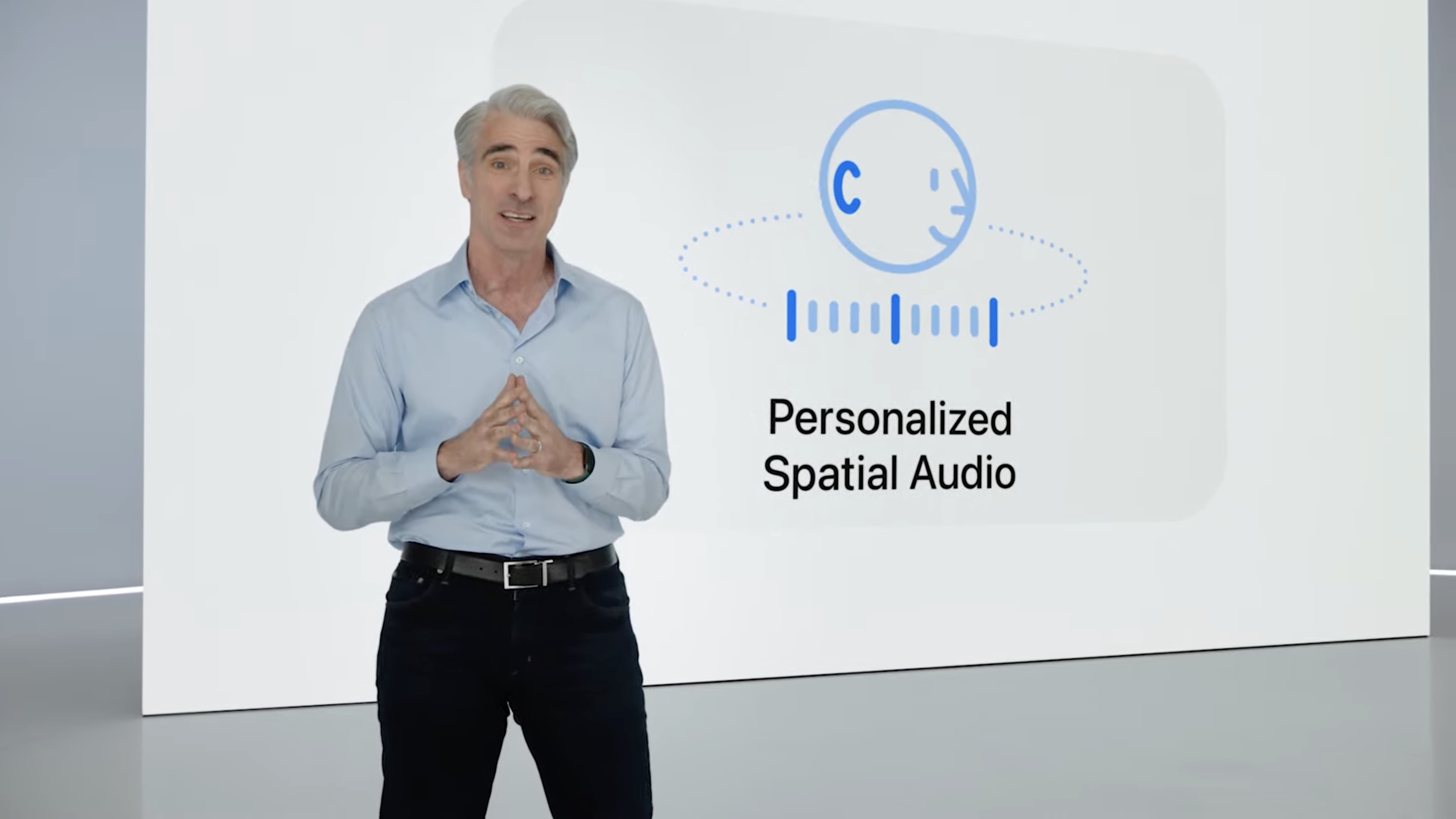Apple is adding personalized audio to AirPods by scanning your ears
Use your iPhone's camera to scan your ear

Apple has just announced that iOS 16 will bring a new feature for music lovers: Personalized Spatial Audio. There's a big trend in 'personalized' sound happening in headphones right now, and it's often done my giving you a kind of hearing test… but not in Apple's case.
Here, Apple plans to actually scan your ears to analyze their shape, and can use that mapping data to create what Craig Federighi, senior vice president of software engineering at Apple, called "a more precise and immersive listening experience tuned just for you".
The scanning will be done by the TrueDepth camera on the iPhone, which is what Apple calls the front camera in an iPhone that has Face ID – it's the same for the infrared 3D scanner that does the facial recognition. This means that you'll need an iPhone X or later to make it work… and the newest iPhone SE can't do it, which is a shame.
Apple hasn't said exactly which headphones will support the new personalized sound feature, but given the mention of Spatial Audio, and the fact that customizing sound is most effective if you know exactly how the speaker in the headphones works, we'd wager that AirPods Pro, AirPods 3 and AirPods Max are top of the list.
Why is personalized spatial audio good?
The great thing about personalized audio generally is that you should hear music even closer to how it was intended to be heard. Everyone's hearing is just a little different, and the physical shape of your ear has an effect on this.
If the audio is adapted for the shape of your ear right from the headphones, then certain little details that might be lost in reflections will be preserved. You'll hear a slightly clearer and crisper sound, with better balance. In theory.
This all goes double for spatial audio. To give the 3D effect that they're supposed to, headphones delivering spatial audio need to be as dynamic as possible. Anything that interferes with the detail interferes with how convincing the 3D effect is.
Get daily insight, inspiration and deals in your inbox
Sign up for breaking news, reviews, opinion, top tech deals, and more.
Apple's Spatial Audio is already massively impressive, particularly in movies. If it's about to get even more sharper and clearer… well, we can't wait to try it out.

Matt is TechRadar's Managing Editor for Entertainment, meaning he's in charge of persuading our team of writers and reviewers to watch the latest TV shows and movies on gorgeous TVs and listen to fantastic speakers and headphones. It's a tough task, as you can imagine. Matt has over a decade of experience in tech publishing, and previously ran the TV & audio coverage for our colleagues at T3.com, and before that he edited T3 magazine. During his career, he's also contributed to places as varied as Creative Bloq, PC Gamer, PetsRadar, MacLife, and Edge. TV and movie nerdism is his speciality, and he goes to the cinema three times a week. He's always happy to explain the virtues of Dolby Vision over a drink, but he might need to use props, like he's explaining the offside rule.